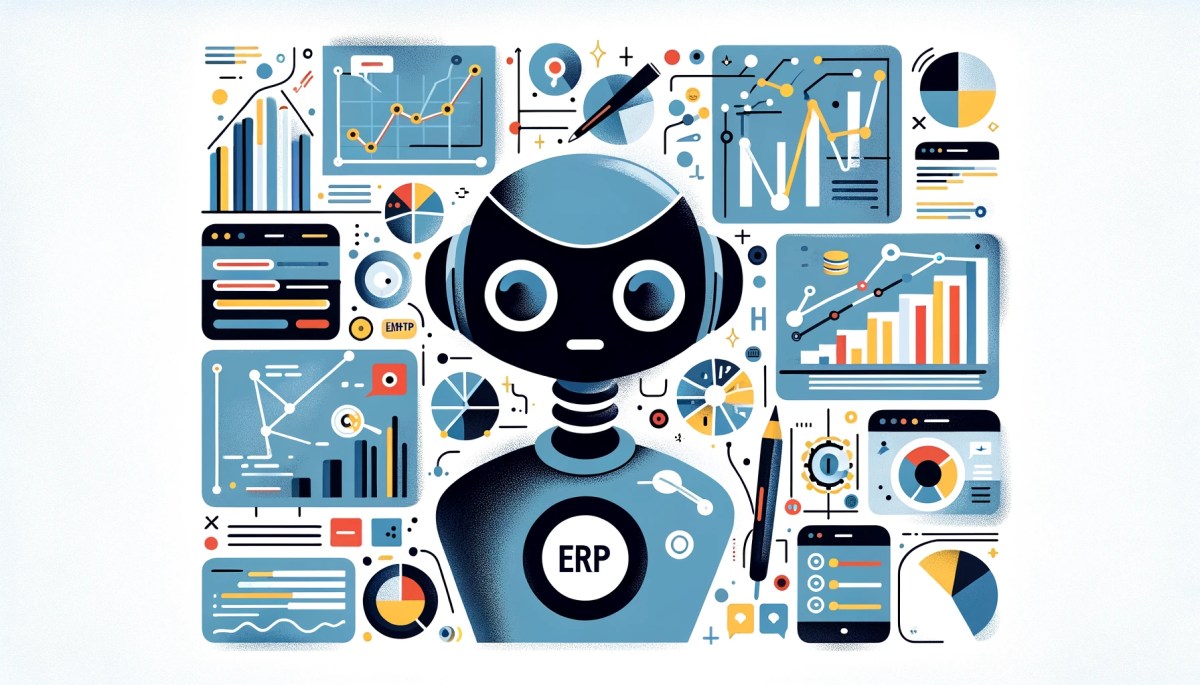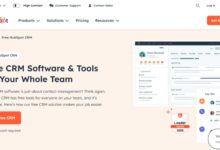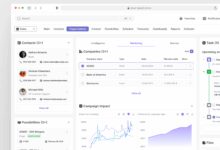CRM with AI Chatbot Integration: 7 Powerful Benefits You Can’t Ignore
In today’s fast-paced digital world, businesses are turning to smarter solutions. A CRM with AI chatbot integration isn’t just a trend—it’s a game-changer. Discover how this powerful combo boosts efficiency, engagement, and growth.
[ez-toc]
1. What Is a CRM with AI Chatbot Integration?

At its core, a CRM with AI chatbot integration combines customer relationship management (CRM) systems with artificial intelligence-powered chatbots. This fusion allows businesses to automate interactions, streamline support, and deliver personalized experiences—all without constant human oversight.
Defining CRM Systems
Customer Relationship Management (CRM) platforms are software tools designed to manage all your company’s interactions with current and potential customers. They help organize customer data, track sales pipelines, manage marketing campaigns, and improve customer service.
Popular CRM platforms like Salesforce, Zoho CRM, and HubSpot CRM store vital customer information such as contact details, purchase history, preferences, and communication logs. This centralized data empowers teams across sales, marketing, and support to work more efficiently.
Understanding AI Chatbots
AI chatbots are intelligent virtual assistants that use natural language processing (NLP), machine learning (ML), and conversational AI to understand and respond to user queries in real time. Unlike rule-based bots that follow predefined scripts, AI chatbots learn from interactions and improve over time.
These chatbots can be deployed on websites, messaging apps (like WhatsApp or Facebook Messenger), and even within mobile apps. They handle tasks ranging from answering FAQs to booking appointments and processing orders—24/7, without fatigue.
How Integration Works
Integrating an AI chatbot into a CRM system means connecting the chatbot’s conversational engine directly to the CRM database. When a customer interacts with the chatbot, it can pull relevant data from the CRM (e.g., past purchases, open tickets) and update records based on new interactions.
- The chatbot identifies the user via email, phone number, or login.
- It retrieves the customer’s profile from the CRM.
- It responds intelligently using context from both the conversation and CRM data.
- After the interaction, it logs the conversation, updates customer status, and triggers follow-ups if needed.
This seamless flow ensures that every customer touchpoint is recorded, analyzed, and acted upon—making the entire customer journey more cohesive and data-driven.
2. Why Businesses Need a CRM with AI Chatbot Integration
The demand for instant, personalized service is higher than ever. Customers expect quick responses, relevant recommendations, and seamless experiences across channels. A CRM with AI chatbot integration meets these expectations by combining automation with deep customer insights.
Rising Customer Expectations
Modern consumers don’t want to wait. According to a Salesforce report, 83% of customers expect immediate support when they reach out. Delays lead to frustration and lost trust.
AI chatbots bridge this gap by providing instant replies, even outside business hours. When integrated with a CRM, they don’t just respond—they respond intelligently, using the customer’s history to tailor answers.
Operational Efficiency Gains
Manual handling of repetitive inquiries—like order status checks or password resets—wastes valuable employee time. With a CRM with AI chatbot integration, these tasks are automated, freeing up human agents for complex issues that require empathy and judgment.
For example, a telecom company might receive thousands of daily queries about data usage. An AI chatbot can instantly pull this info from the CRM and deliver it to the customer, reducing call center volume by up to 40%, as seen in real-world implementations.
Scalability Without Compromise
As businesses grow, so does customer interaction volume. Scaling human support teams is expensive and slow. AI chatbots, however, can handle thousands of conversations simultaneously—without hiring, training, or managing additional staff.
When linked to a CRM, scalability doesn’t mean sacrificing personalization. The chatbot remembers past interactions, preferences, and behaviors, ensuring each customer feels recognized and valued—even at scale.
“The future of customer service isn’t just automation—it’s intelligent automation powered by data.” — Gartner Research
3. Key Benefits of CRM with AI Chatbot Integration
Implementing a CRM with AI chatbot integration offers transformative advantages. From boosting response times to enhancing data accuracy, the benefits span across departments and directly impact the bottom line.
24/7 Customer Support Availability
One of the most immediate benefits is round-the-clock availability. Unlike human agents, AI chatbots don’t need breaks, vacations, or shift changes. They operate continuously, ensuring customers get help whenever they need it.
This is especially valuable for global businesses serving multiple time zones. A customer in Tokyo can get instant assistance at midnight, just as easily as one in New York during business hours.
Improved Lead Qualification and Nurturing
AI chatbots integrated with CRM systems can engage website visitors in real time, ask qualifying questions, and score leads based on their responses. For instance, a chatbot might ask:
- What product are you interested in?
- What’s your budget range?
- When do you plan to make a purchase?
Based on the answers, the chatbot assigns a lead score and pushes the contact into the CRM with tags like “High Intent” or “Needs Follow-Up.” Sales teams can then prioritize high-value prospects, increasing conversion rates.
Enhanced Data Collection and Accuracy
Every interaction with an AI chatbot becomes a data point. When integrated with a CRM, this data is automatically logged, reducing manual entry errors and ensuring up-to-date customer profiles.
For example, if a customer updates their email address via chatbot, the change is instantly reflected in the CRM. This eliminates outdated records and improves communication accuracy across marketing and service teams.
4. Real-World Use Cases of CRM with AI Chatbot Integration
Across industries, companies are leveraging CRM with AI chatbot integration to solve real problems and drive measurable results. Let’s explore some compelling use cases.
E-commerce: Personalized Shopping Assistance
Online retailers use AI chatbots to guide customers through product selection. By accessing CRM data, the bot knows a user’s purchase history and browsing behavior.
For example, if a customer previously bought running shoes, the chatbot might suggest matching socks or new models based on recent activity. It can also assist with returns, track orders, and apply loyalty discounts—all within the chat interface.
Brands like H&M and Sephora have successfully implemented such systems, reporting increased average order values and reduced cart abandonment.
Banking and Finance: Secure Account Management
Banks use AI chatbots to handle balance inquiries, transaction history, and fraud alerts. When integrated with CRM, the bot verifies identity and pulls account data securely.
For instance, a customer asking, “Did I get charged for Netflix this month?” gets an instant response with the transaction details. The CRM logs the inquiry, helping detect unusual patterns and trigger proactive fraud alerts.
According to a McKinsey study, banks using AI chatbots saw a 30% reduction in call center costs and a 25% increase in customer satisfaction.
Healthcare: Appointment Scheduling and Patient Engagement
Hospitals and clinics use chatbots to schedule appointments, send reminders, and answer common health questions. Integration with CRM systems ensures patient records are updated in real time.
A patient can message a chatbot to reschedule a visit. The bot checks availability, updates the calendar, and notifies the doctor’s office—all while logging the change in the CRM. This reduces no-shows and improves care coordination.
5. How to Choose the Right CRM with AI Chatbot Integration
Not all CRM platforms offer seamless AI chatbot integration. Choosing the right solution requires evaluating several key factors to ensure compatibility, scalability, and long-term value.
Compatibility with Existing Systems
Before adopting a new CRM with AI chatbot integration, assess whether it works with your current tech stack. Does it integrate with your website, email marketing tools, payment gateways, and helpdesk software?
Look for platforms that offer native integrations or support APIs for custom connections. For example, Zapier can connect disparate systems, but native integration is always more reliable and secure.
Customization and Branding Options
Your chatbot should reflect your brand’s voice and tone. Can you customize its appearance, language, and response style? Can it use your logo, colors, and preferred greetings?
Some platforms allow you to train the AI on your brand’s communication style, ensuring consistency across all customer touchpoints. This level of customization builds trust and reinforces brand identity.
Analytics and Reporting Capabilities
A powerful CRM with AI chatbot integration should provide detailed analytics. You need insights like:
- Number of conversations handled
- Customer satisfaction scores
- Resolution rates
- Common query types
- Lead conversion performance
These metrics help you refine the chatbot’s performance, identify training needs, and measure ROI. Platforms like Salesforce Einstein and HubSpot offer built-in AI analytics dashboards.
6. Implementation Steps for CRM with AI Chatbot Integration
Successfully deploying a CRM with AI chatbot integration requires careful planning and execution. Follow these steps to ensure a smooth rollout.
Define Clear Objectives
Start by identifying what you want to achieve. Is it faster response times? Higher lead conversion? Reduced support costs? Your goals will shape the chatbot’s design and functionality.
For example, if your goal is lead generation, focus the chatbot on qualifying visitors and capturing contact info. If it’s customer retention, program it to offer loyalty rewards or renewal reminders.
Select and Configure the Right Tools
Choose a CRM platform that supports AI chatbot integration natively or via trusted third-party apps. Popular options include:
- Salesforce + Einstein Bots: Enterprise-grade AI with deep CRM integration.
- HubSpot + Conversations: User-friendly for SMBs with strong marketing alignment.
- Zoho CRM + Zia: Affordable and feature-rich with multilingual support.
Configure the chatbot’s workflows, intents, and responses. Use historical CRM data to train the AI on common customer questions and ideal responses.
Test, Launch, and Optimize
Before going live, conduct thorough testing. Simulate real customer interactions to check accuracy, response time, and CRM data syncing.
Launch in phases—start with a small audience or a single department. Gather feedback, monitor performance, and make iterative improvements.
Use A/B testing to compare different chatbot scripts or response styles. Over time, refine the AI model using machine learning to improve accuracy and engagement.
7. Challenges and Solutions in CRM with AI Chatbot Integration
While the benefits are significant, implementing a CRM with AI chatbot integration isn’t without challenges. Being aware of these hurdles helps you prepare and overcome them effectively.
Data Privacy and Security Concerns
Handling sensitive customer data through chatbots raises privacy issues. Ensure your solution complies with regulations like GDPR, CCPA, and HIPAA.
Solutions include:
- End-to-end encryption for chatbot conversations
- Role-based access controls in the CRM
- Regular security audits and penetration testing
- Clear user consent mechanisms before data collection
Transparency builds trust—inform customers when they’re interacting with a bot and how their data will be used.
Managing Customer Expectations
Some customers may expect human-level empathy from AI chatbots. When the bot fails to understand a complex query, frustration can occur.
To manage expectations:
- Design the chatbot to acknowledge its limitations: “I’m still learning. Let me connect you to a human agent.”
- Ensure seamless handoff to live agents when needed, with full context transfer from the chatbot to the CRM.
- Use sentiment analysis to detect frustration and escalate accordingly.
Ensuring AI Accuracy and Relevance
AI chatbots can misinterpret queries, especially with slang, typos, or ambiguous language. This leads to incorrect responses and poor user experience.
Improve accuracy by:
- Training the AI on industry-specific terminology and common customer phrases.
- Using intent recognition models that go beyond keywords to understand context.
- Regularly reviewing chat logs to identify and fix misclassifications.
- Implementing feedback loops where users can rate bot responses.
8. The Future of CRM with AI Chatbot Integration
The evolution of AI and CRM technology is accelerating. The future of CRM with AI chatbot integration promises even deeper personalization, predictive capabilities, and omnichannel intelligence.
Hyper-Personalization Through Predictive Analytics
Future AI chatbots won’t just react—they’ll anticipate. By analyzing CRM data patterns, they’ll predict customer needs before they’re expressed.
Imagine a chatbot saying, “I noticed you usually order printer ink every two months. Would you like to reorder now?” This level of proactive service increases convenience and loyalty.
Voice and Multimodal Interactions
As voice assistants like Alexa and Google Assistant grow in popularity, CRM with AI chatbot integration will expand beyond text. Voice-enabled chatbots will allow customers to interact hands-free, especially useful in automotive, smart homes, and accessibility scenarios.
Multimodal bots will combine voice, text, images, and even augmented reality—like showing a product demo via chat.
Emotion AI and Sentiment-Driven Responses
Next-gen AI will detect emotions through tone, word choice, and typing speed. A CRM with AI chatbot integration could adjust its responses based on emotional cues—offering empathy during frustration or enthusiasm during excitement.
This emotional intelligence will make interactions feel more human, bridging the gap between automation and authentic connection.
9. Measuring Success: KPIs for CRM with AI Chatbot Integration
To ensure your investment delivers value, track key performance indicators (KPIs) that reflect both operational efficiency and customer satisfaction.
Response Time and Resolution Rate
Measure how quickly the chatbot responds and resolves queries. Aim for sub-second response times and high first-contact resolution rates.
Aim for:
- Average response time: < 1 second
- First-response resolution: > 70%
- Escalation rate to human agents: < 20%
Customer Satisfaction (CSAT) and Net Promoter Score (NPS)
After interactions, prompt users to rate their experience. Track CSAT (Customer Satisfaction Score) and NPS (Net Promoter Score) trends over time.
If scores improve post-implementation, it’s a strong indicator of success. Low scores signal areas for improvement in bot training or handoff processes.
Conversion and Retention Metrics
For sales and marketing, track:
- Lead-to-customer conversion rate
- Cart abandonment reduction
- Repeat purchase rate
- Customer lifetime value (CLV)
A well-integrated CRM with AI chatbot integration should positively impact these metrics by nurturing leads and retaining customers more effectively.
10. Top Platforms Offering CRM with AI Chatbot Integration
Several platforms lead the market in offering robust CRM with AI chatbot integration. Here’s a comparison of the top contenders.
Salesforce Einstein Bots
Salesforce offers one of the most advanced AI chatbot solutions through Einstein Bots. It’s deeply integrated into the Salesforce CRM, allowing bots to access and update records seamlessly.
Key features:
- Drag-and-drop bot builder
- Predictive intent recognition
- Automatic case creation
- Live agent handoff with context
Ideal for large enterprises needing scalability and deep customization.
HubSpot Conversations with AI
HubSpot’s AI-powered chatbot tool integrates natively with its CRM. It’s user-friendly and perfect for small to mid-sized businesses.
Features include:
- Smart content recommendations
- Lead qualification workflows
- Automated email follow-ups
- Real-time reporting
Its strength lies in marketing alignment and ease of use.
Zoho CRM + Zia
Zia, Zoho’s AI assistant, powers chatbots across Zoho’s ecosystem. It supports multilingual interactions and integrates with Zoho Desk, Sales, and Marketing.
Advantages:
- Affordable pricing
- Strong automation capabilities
- Voice and text support
- Custom AI training
A great choice for cost-conscious businesses wanting powerful AI without enterprise price tags.
What is a CRM with AI chatbot integration?
A CRM with AI chatbot integration combines customer relationship management software with artificial intelligence-powered chatbots to automate customer interactions, enhance data accuracy, and deliver personalized support at scale.
How does AI chatbot integration improve customer service?
It provides 24/7 instant responses, reduces wait times, handles routine inquiries, and uses CRM data to personalize interactions—leading to higher satisfaction and efficiency.
Can AI chatbots replace human agents?
No, they complement human agents. AI chatbots handle repetitive tasks and initial queries, while humans manage complex, emotional, or high-stakes interactions. The best systems enable smooth handoffs between bot and agent.
Is CRM with AI chatbot integration secure?
Yes, when implemented correctly. Look for platforms with encryption, compliance certifications (GDPR, HIPAA), and secure API integrations to protect customer data.
Which industries benefit most from this technology?
E-commerce, banking, healthcare, telecommunications, and SaaS companies see the highest ROI due to high customer interaction volumes and the need for instant, personalized service.
The integration of CRM with AI chatbot integration is no longer optional—it’s essential for staying competitive. From automating support to driving sales and improving customer loyalty, this technology transforms how businesses engage with their audience. By choosing the right platform, setting clear goals, and continuously optimizing performance, companies can unlock unprecedented levels of efficiency and personalization. The future of customer experience is intelligent, seamless, and always available.
Further Reading:


